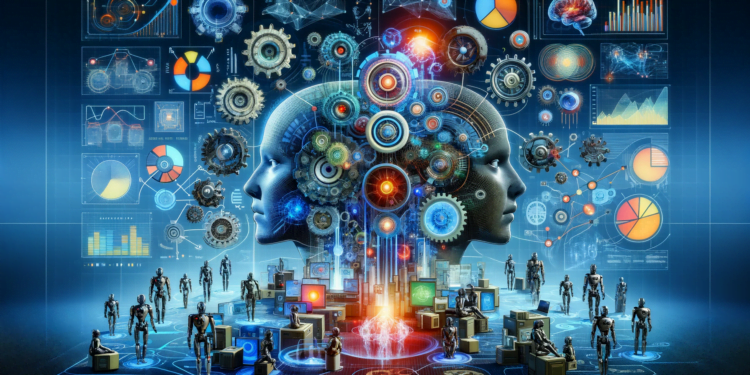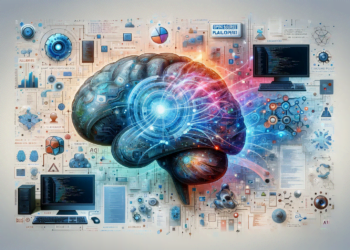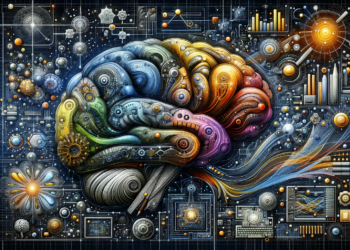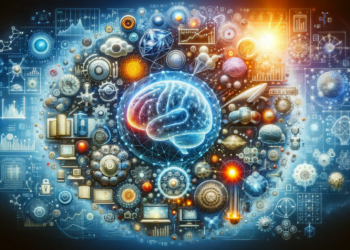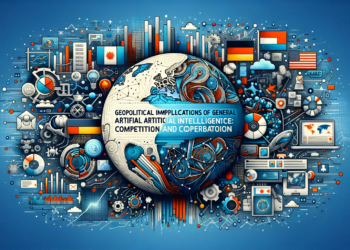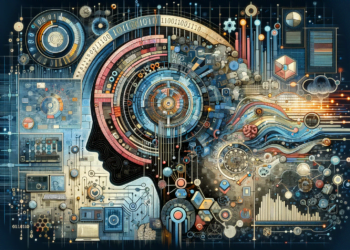Multiagent systems represent a paradigm in the field of artificial intelligence (AI) whose complexity and potential reflect the efforts to achieve general artificial intelligence (AGI). This perspective seeks to emulate human cognitive abilities at a highly functional level, thereby enabling machines to perform various tasks with an understanding and adaptability comparable to that of a human.
Modeling of Agents and Multiagent Architectures
Foundations and Typologies of Agents
The individual agent, the cornerstone of these systems, is an autonomous software entity whose behavior is defined by its perception of the environment, processing, and actions. Multiple taxonomies classify these agents based on their rationality, adaptability, or learning capacity. A significant advancement has been the development of BDI (Belief-Desire-Intention) agents, which encapsulate these cognitive states to direct actions and adapt to changes in the environment.
Architectures for Interaction and Collaboration
Multiagent architectures evolve from simple communication schemes to complex organizational structures with agents assuming specific roles, following protocols and norms of interaction that seek operational synergies and collaborative task resolution. An exemplary infrastructure is the holonic, which models scalable systems where agents organize into holons (autonomous units that can in turn be part of a larger entity), promising efficient resource management and flexibility in the face of changing demands.
Innovations in Algorithms and Learning
Coordination Mechanisms and Decision Making
Advances in algorithms for multiagent systems have explored how to facilitate coordination and cooperation. Notably, algorithms based on auctions and negotiations determine the allocation of tasks and resources among agents. Additionally, game theory, and in particular, cooperative games, provide a framework for designing strategies that ensure maximum collective utility.
Multiagent Learning
Recent interest focuses on multiagent learning, particularly Multiagent Reinforcement Learning (MARL), which allows multiple agents to learn optimal policies through interaction with each other and with their environment. Deep learning methods have been incorporated (Deep MARL), facilitating the handling of high-dimension state and action spaces and complexity.
Practical Applications
Transportation and Logistics Systems
Algorithms for multiagent systems have revolutionized the domain of transportation and logistics. Companies like Amazon implement these systems for the optimization of their supply chains and warehouse management, where autonomous agents coordinate storage and shipment of products in real-time, swiftly reacting to demand fluctuations.
Energy Management and Smart Grids
In energy management, multiagent systems are key in the transition towards smart electrical grids. Agents representing consumers, producers, and distributors can negotiate and balance energy supply and demand in real-time, optimizing the use of renewable resources and reducing environmental impact.
Challenges and Future Projections
Scalability and Robustness
As multiagent systems become more complex and widely distributed, significant challenges of scalability and robustness emerge. The integration of distributed algorithms that operate under uncertainty without centralized control is essential, alongside techniques that ensure resilience to failures and attacks in such systems.
Towards AGI
Multiagent systems hold vast potential to approximate AGI through the symbiosis of the cognitive abilities of individual agents. Research points toward the emergence of intelligence through interaction among multiple simple cognitive entities, a phenomenon akin to the collective intelligence found in nature. The capacity for self-organization and adaptation in dynamic environments is fundamental in this quest, enhancing the creation of systems capable of evolving and learning autonomously without direct human intervention.
Conclusions and Case Studies
The promise that multiagent systems will catalyze the development of AGI is palpable as their capabilities expand. Case studies such as the RoboCup project (robotic soccer competitions), where autonomous agents demonstrate complex collective strategies, or simulation platforms like StarCraft II, employed to challenge and expand the boundaries of MARL, are testimonies to the depth and applicability of the field. Additionally, the convergence of these systems with other branches of AI like affective computing and context modeling opens paths to a more comprehensive and integrative AGI.
The synergy of intelligent agents offering solutions to real-world problems is just an indication of the latent potential in multiagent systems. As these systems become more sophisticated, they could play a fundamental role in the emergence of a flexible, robust, and adaptive AGI, thus marking a milestone in the quest for the Holy Grail of artificial intelligence.

